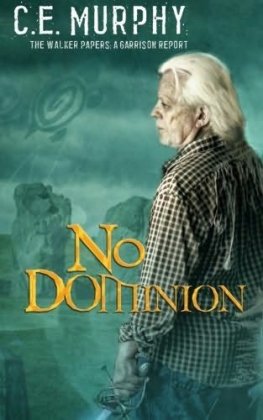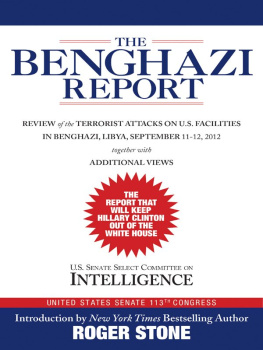T HE DEADLY ATTACK on the American consulate in Benghazi, Libya, symbolically coinciding with the eleventh anniversary of the terrorist attacks of September 11th, 2001, triggered a confluence of events that spilled into US domestic politics, military covert operations, and a number of classified CIA programs. Because the terrorist strike occurred in the run-up to the US presidential election, it became a foregone conclusion that the truth of the attacks would be swept up and lost in political squabbling as both major parties jockeyed for position and got some cheap digs in on their opponents. Added to the media circus was the fact that various US government institutions and agencies did engage in a very real cover-up: they responsibly tried to keep covert operations secret. But they also sought to limit political liability on the guilty parties whose negligence led to the attack in the first place.
Conservatives claimed that President Obama callously denied military reinforcements to American forces on the ground in Libya who were badly outnumbered and outgunned. The American right sought to portray Obama in the most negative light possible, accusing him of glossing over the attacks to compensate for foreign policy failures. The narrative went, President Obama: not tough on terrorism and betrayer of US Navy SEALs.
Liberals decried the Republican persecution, doing damage control by laying blame on forces beyond the administrations control. According to this narrative, the Benghazi attack happened because of an irresponsible amateur film that defamed the Prophet Muhammad, inflaming the religious fervor of the Islamic world. Soon protests formed outside US embassies across the Middle East, and the series of events rapidly reached its bloody climax in the attack on the US consulate in Libya.
For their part, libertarians announced that the attacks were further proof that America had no business interfering in the affairs of foreign countries. Meanwhile, conspiracy theorists pointed toward a sinister plot by powerful dark forces to liquidate Ambassador Stevens. In fact, every party commenting on or involved in the Benghazi affair seemed to refer to its opposition as conspiracy theorists at some point in order to delegitimize conflicting opinions.
This e-book aims to cut through the static and white noise generated by the media pundits, partisan politics, and unfounded conspiracy theories. The truth does involve some conspiracy. After all, the major players were the CIA, Pentagon, Joint Special Operations Command (JSOC), and State Departmentinstitutions synonymous with backroom politics, intelligence gathering, and covert operations. But this report points in directions, and draws conclusions, that have been completely neglected by both the mainstream and alternative media up to this point.
When it comes to the hidden world of terrorists, counter-terrorists, and spies, the truth is usually stranger than fiction. Because of this, many will find the facts unfolded in this e-book to be both uncomfortable and unsatisfying. Obamas foes will see a picture emerge in which the President is far from being a callous, evil man. Passionate supporters of the President will be angry to see Obama as an aloof and rather ineffective leader. Both political parties will be disappointed to see that this story, the 9/11 Benghazi attack, really doesnt involve the President all that much one way or the other.
This is the reality of the modern state. The bureaucratic machinery is as extensive and sprawling as it is expensive. Various governmental agencies act under their own authority and make their own decisions. Mid- and high-level officials make decisions and latch on to the levers of power. With the Department of Defense running highly complex operations all over the globe, twenty-four hours a day, there is no way for American power to be projected effectively if every bureaucrat is waiting for the President to bless his actions. The power to act has to be delegated down the chain of command; that is a crucialand cautionaryaspect of this story.
However, it cannot be overstated that this e-book does not cop out or shy away from the truth by placing blame on the rusty, dulled mechanics of a faulty bureaucracy. We do not accuse some abstract technical detail, saying that bad intelligence or poor communications led to the Benghazi debacle. Americans have heard enough of these types of excuses, from the original 9/11 attacks to the 2008 housing bubble and subsequent economic crash. We name names and hold accountable those who acted cowardly and those who erred by seeking to protect their political careers at the expense of human lives.
We also point to the heroes, men of tremendous character who showed exemplary physical and moral courage the night of the attack.
The story, and the aftermath, of the Benghazi attack is a complex series of events involving insider politics between agencies in proverbial smoke-filled rooms. It features double-dealing political players in Washington. It involves the interaction between different military units and paramilitary organizations. To the outsider, to the American public, it is all very complicated and strange. This is another reason why the full story has not yet been articulated to Americans, but we believe that an informed public is necessary in a functioning democracy.
This e-book was written with the consultation of over a dozen experts, Special Operations personnel (many of them contributing editors of SOFREP.com), and others privy to inside information from the halls of power in Washington, DC. For obvious reasons, their identities cannot be revealed. This is likely to be the definitive account of the Benghazi attack for years to comeuntil historians can sift through the archives, get documents declassified, and interview all of the participants.
For now, we hope that this e-book tells it like it is. In this account, the actions of those involved speak for themselves. Let the chips fall where they may.
T HE EVENTS OF 9/11/12 did not happen in a vacuum, something that Ambassador Chris Stevens no doubt would have reminded us of if he had not been tragically killed during the attack. By September 2012, Libya was a ticking time bomb: no strong central government after Gaddafis fall; a large population of well-armed and experienced Islamic extremists who had been sending a steady stream of fighters to Iraq and Afghanistan for years; and scores of covert Special Operations and paramilitary units throughout the country, disturbing the local hornets nests of terrorists. When the situation eventually exploded, a poorly defended outpost of the State Department would bear the full brunt of the blast. This is the story of the Benghazi tragedy.
We begin by outlining the dangers inherent in Libyas situation before the fall of Gaddafi. Readers interested in a fuller history of Libya are invited to consult Appendix II at the end of the book.
L IBYAS H OMEGROWN J IHADISTS
Prior to becoming the United States ambassador to Libya in 2012, Chris Stevens had served in the country twice before. A Foreign Service officer since 1991, Stevens had his first stint in Libya as Deputy Chief of Mission in 20072009; he returned as a Special Representative in 2011, when he came in on a Greek cargo ship to establish rapport with the rebels and the transitional Libyan government during the Civil War.
Because of Bradley Mannings leaked classified documents on WikiLeaks, we now can draw upon a number of diplomatic cables written by Stevens during his 20072009 work in Libya. These cables help us understand Benghazi in two ways. The first is that they give us some insight into Stevenss character and professionalism. Second, because he was a subject matter expert in Libyan history and culture, Stevenss cables provide an accurate portrait of the country. In particular, they reveal the homegrown forces of Islamic extremism that would explode in Benghazi.











